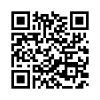MEMAHAMI MOTIF PERKAWINAN BIDADARI DENGAN LAKI-LAKI BUMI SEBAGAI SPIRIT FEMINISME DALAM FOLKLORE INDONESIA
Downloads
(Title: The Poetry's Potencies As Emotion Therapy Media in Society 5.0). This study aims to describe the function of poetry as a medium for emotional therapy in society 5.0. The data from this study are poetry texts written by students. Data were collected through test techniques (poetry writing) and non-tests (interviews, observations, and documentation). Based on the results of the study, it is said that aside from being a medium for brainstorming one's thoughts, feelings and experiences, poetry has the potential to become a medium for emotional therapy. Dictionaries, Enjambments, typography, and arrangement of lines can be said to represent the soul of the poet when angry, happy, in love, traumatized, experiencing sadness, and other emotions. The entire contents of the poem is a reflection of the emotions that the poet naturally experienced, saw, and felt in the packaging of words that were solid and full of meaning.
Keywords: poetry, emotion therapy, therapy media, society 5.0
(Title: Understanding The Motif of Midwifery With Earth Men as The Spirit of Feminism in the Indonesian Folklore). Folklore is one of the intellectual works that was born as an expression of the world view of the supporting community. One of the folklore motifs found in a number of ethnic groups in Indonesia is that which tells about the marriage between earth men and angels from heaven. Among these folklore are Jaka Tarub (Java), Putri Surga (Papua), Cerita Air Tukang (Maluku), Betawol (Miraculous North Kalimantan), Malim Deman and Puti Bungsu (Riau), Tomanurun (Toraja), and Si Lanang and Punai (South Kalimantan). This study tries to compare and understand the motif of marriage between men of the earth and deities by using the perspective of feminism. The results showed that the deities had higher positions and abilities than men of the earth who married him. This means that the upper world (heaven or heaven) the place of origin of the deities in social stratification is considered higher than the underworld, even though the two complement each other. The existence of the motif of marriage between men of the earth and desities found in a number of ethnic groups in Indonesia shows a high appreciation for the figure of the mother as an ancestor who inherited certain ethnicities, which is a manifestation of the spirit of feminism in a number of folklores in Indonesia.
Keywords: deities, world above, world below, feminism
Downloads
Atisah. (2015). "Jalan Belek: Cerita Bidadari dari Rejang, Bengkulu: Kajian Motif," Metasastra 8 (2), 239- 248. https://doi: 10.26610/metasastra.2015.v8i2.239-248
Atkeson, Lonne R. & Kerevel, Yann P. (2013). "Explaining the Marginalization of Women in Legislative Institutions." The Journal of Politics. 75 (4), 980–992.
Danandjaja, James. (2007). Folklor Indonesia Ilmu Gosip Dongeng dan Lain Lain. Jakarta: Grafiti Pers.
Hamilton, Edith. (1942). Mythology: Timeless Tales of Gods and Heroes, Intro. Diunduh dari https://mfy724lad04.storage.googleapis.com.
Khairiah, Dewi. (2016). Tomanurun. Jakarta: Pusat Bahasa, Depertemen Pendidikan Nasional.
Khotimah, (2013). Agama Hindu dan Ajaran-ajarannya. Pekanbaru-Riau: Daulat Riau.
Mardiyanto. (2007). Kalarahu Kumpulan Cerita Rakyat Jawa. Jakarta: Pusat Bahasa, Depertemen Pendidikan Nasional.
Mansoben, J. R. (2003). "Konservasi Sumber Daya Alam Papua Ditinjau dari Aspek Budaya," Antropologi Papua, 2 (4), 1-12.
Maswinara. I Wayan. (1999). Dewa Dewi Hindu. Surabaya: Paramita.
Olthof, W.L. (2017). Babad Tanah Jawi:Mulai dari Nabi Adam sampai Runtuhnya Mataram. Yogyakarta: Narasi
Pratiwi, Dwi. (2016). Cendrawasih si Burung Bidadari. Jakarta: Badan Pengem-bangan dan Pembinaan Bahasa.
Rahayu, Weni. (2017). Tongkonan Mahakarya Arsitektur Tradisional Suku Toraja, Jakarta: Badan Pengembangan dan Pembinaan Bahasa.
Rahim, Abd. Rahman. (2017). Mengenal Lebih Dekat Tana Toraja. Jakarta: Badan Pengembangan dan Pembinaan Bahasa.
Roibin,. (2010). "Agama dan Mitos: Dari Imajinasi Kreatif Menuju Realitas yang Dinamis." el-Harakah, 12 (2), 85-97.
Saidah, Nor. (2013). "Bidadari dalam Konstruksi Tafsir al qur'an: Analisis Gender atas Pemikiran Amina Wadud Muhsin dalam Penafsiran Al Qur'an." Palastren, 6 (2),
Schimmel, Annemarie. (1994). The Mystery of Numbers. USA: Oxford University Press.
Sudibyo. 1974. "Mitos Hirogami dalam Langit dan Bumi dalam Cerita Pelipur Lara," Humaniora No. 1, 58-62. https://doi.org/10.22146/jh.2031.
Thompson, Stith. (2016). Motif Index of Folk Literature: a Mythological Motifs. Bloomington and Indianapolis: Indiana University Press. Diunduh dari https://archive.org/details/Thompson2016MotifIndex/page/n1
Tong, Rosemary Putnan. (2006). Feminist Thought: A More Comprehensive Introduction. Diterjemahkan dalam Bahasa Indonesia oleh Aquaini Priyatna Prabasmara. Bandung: Jalasutra.
Winahyu, Sri Kusuma. (2017). Putri Surga. Jakarta: Pusat Bahasa, Depertemen Pendidikan Nasional.
The authors who publish this journal agree to the following requirements. The author retains the copyright regarding the work being simultaneously licensed below Creative Commons Attribution ShareAlike License.

Jurnal Diksi by Faculty of Languages, Arts, and Culture, Universitas Negeri Yogyakarta is licensed under a Creative Commons Attribution-ShareAlike 4.0 International License.
Based on a work at http://journal.uny.ac.id/index.php/diksi




















